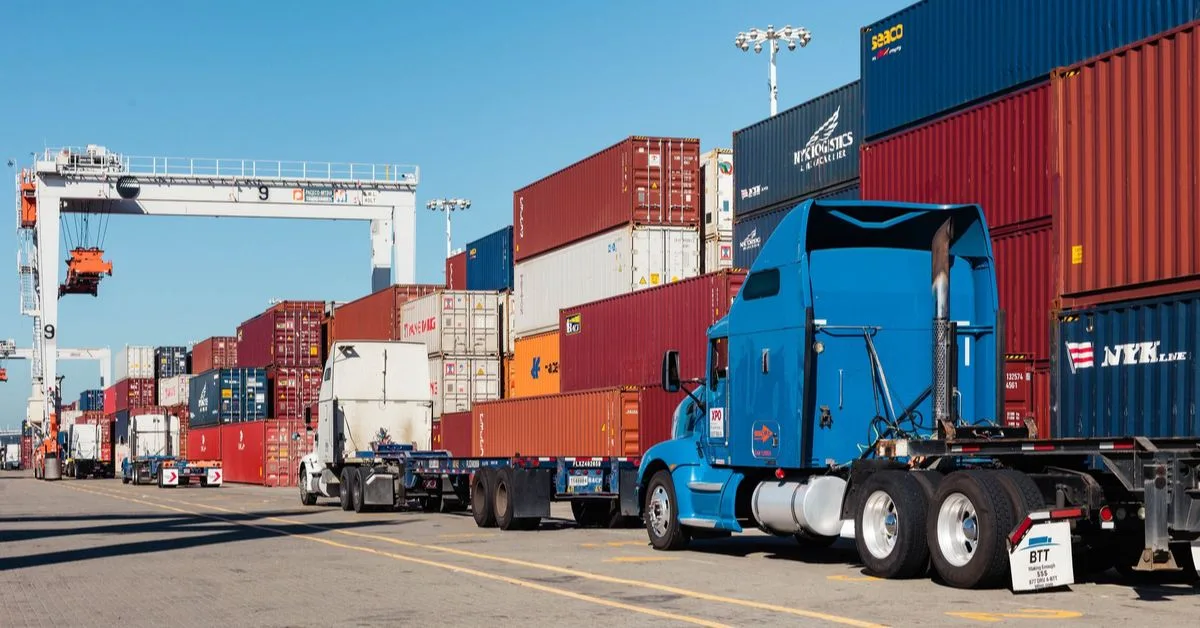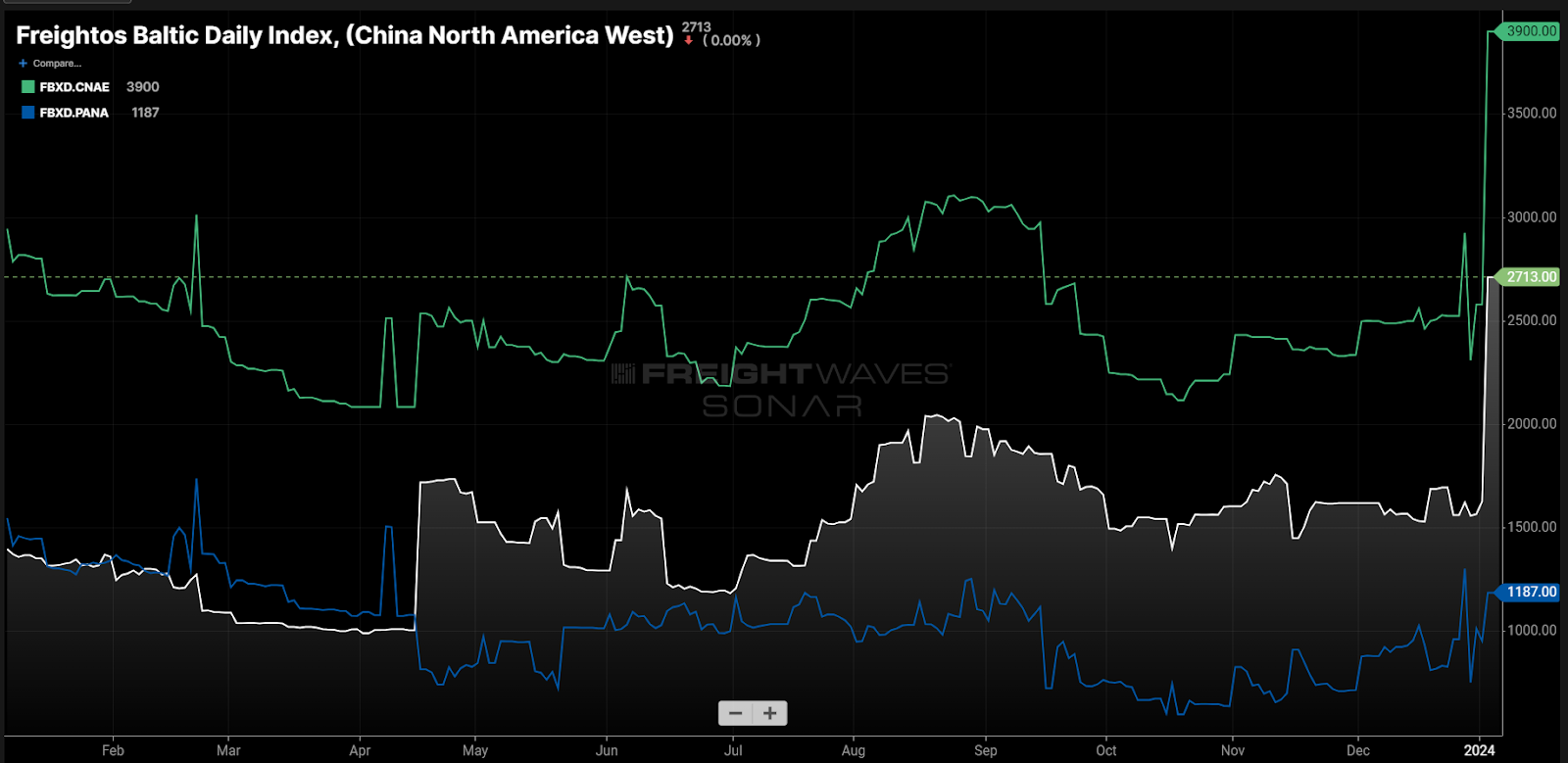
Freightos Baltic Daily Index – China to North American west and east coasts, Panama Spread
As a pandemic-era pattern of shipping to Eastern ports continues to unravel, shippers are further encouraged to move freight into the U.S. West Coast from Asia by way of disproportionate rate rises brought on by the Red Sea conflict.
According to the Freightos Baltic Exchange Index, spot rates for 40-foot equivalent containers traveling by sea from China to the east and west coasts of North America increased at the beginning of the year. Currently, the Middle East crisis affects almost all maritime lines worldwide. The “Panama Spread” jumped by more than $1,100 as inbound East coast rates rose more than those to the West.
The Panama Spread is the disparity in maritime container transportation costs from China to the east and west coasts of North America. Positive statistics suggest a greater financial incentive to ship to the west coast.
The continuing drought in Central America has slowed the flow of cargo via the Panama Canal and lengthened transit times.

According to SONAR’s Container Atlas, transit durations from Shanghai to Savannah, Georgia, have increased by approximately 2.5 days since October, as canal capacity has been reduced owing to a lack of water.
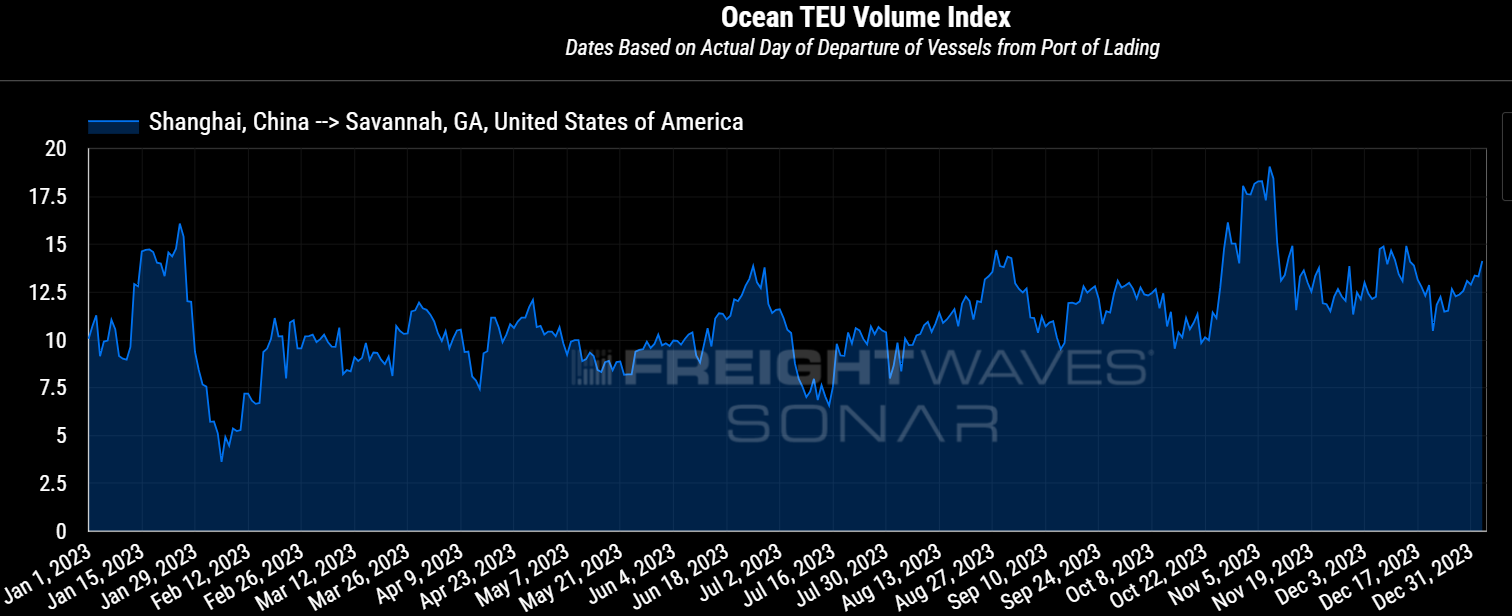
So far demand does not appear to be impacted by the increasing service. Booking volumes in the Shanghai-to-Savannah lane are up since the restrictions were placed on the canal. Time will tell if the rate increases will persist and erode demand.
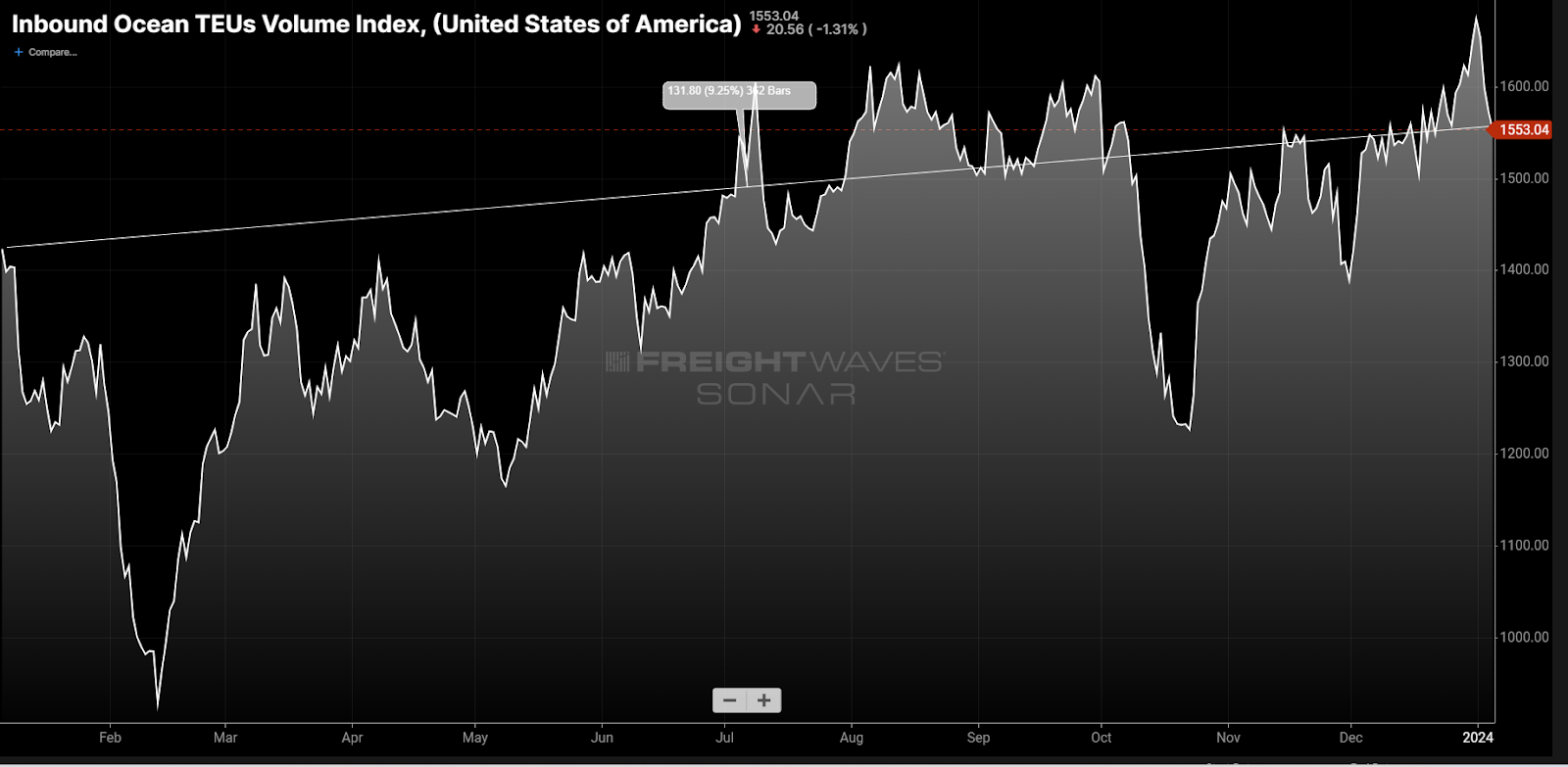
U.S. import demand has increased at a sustainable rate over the past year as inventories appear to have right-sized, increasing the need for more consistent replenishment.
A surprisingly robust consumer has also contributed to stronger-than-expected import demand.
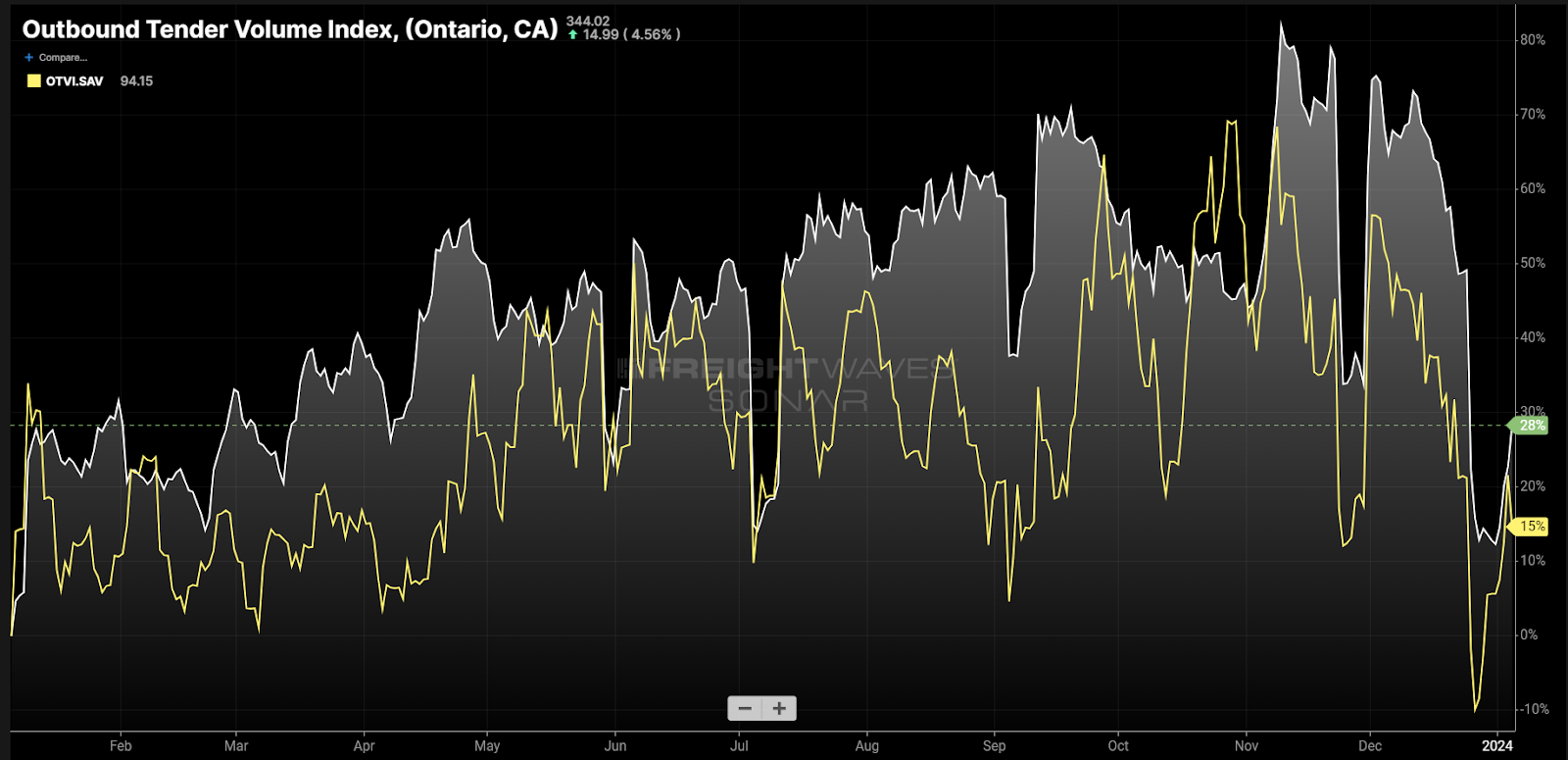
It is difficult to tell with any precision how much influence the increased transit times and cost differentials have had on domestic freight. Tender volumes out of two of the country’s most import-dependent markets — Ontario, California, out West and Savannah in the East—have increased over the past year, with the Western market growing more than the Eastern one.
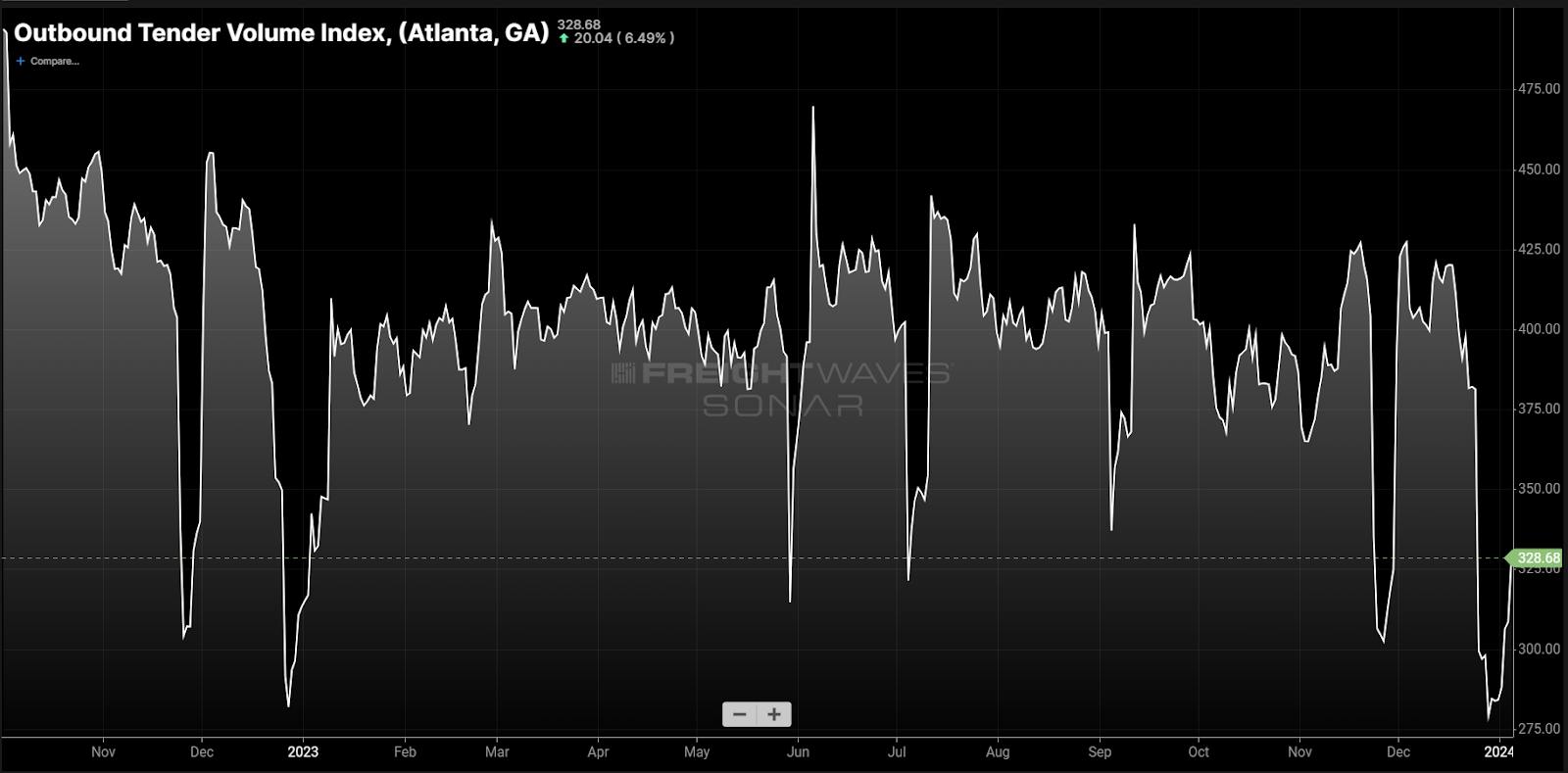
The Atlanta market — the second-largest outbound freight market in the country, with strong ties to Savannah — has not grown, with tender volumes contracting from an annual perspective.
The Southern California freight markets tend to slow in January and February before ramping in the spring and peaking around September.
Freight attrition will be difficult to recognize at this point as the domestic truckload market remains heavily oversupplied with capacity, but many are expecting that to change later in the year.
The Los Angeles-area markets were the bottleneck for many supply chains during the pandemic. At the bare minimum, recent events are pushing more volume to the West, which could manifest more significantly later this year.


